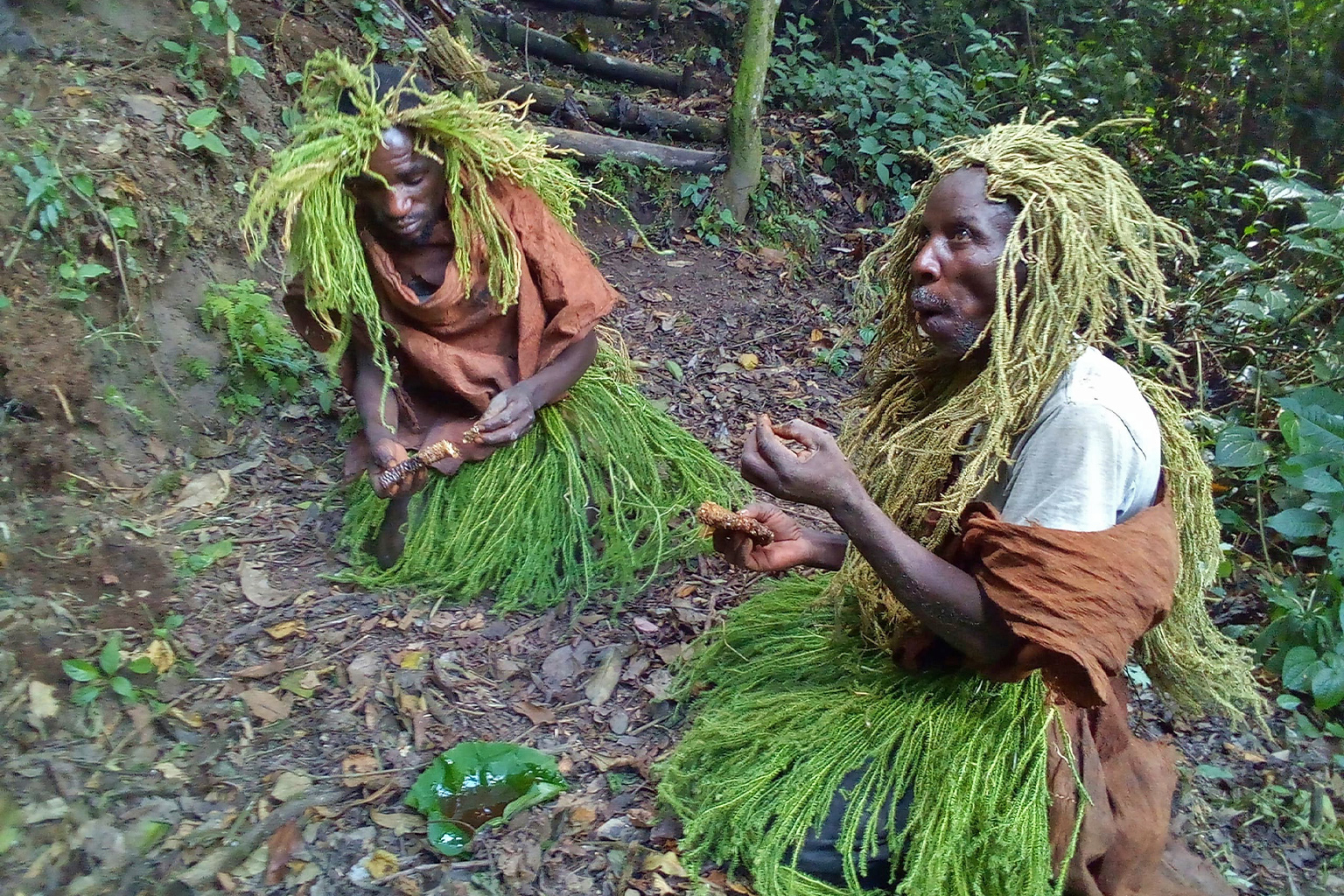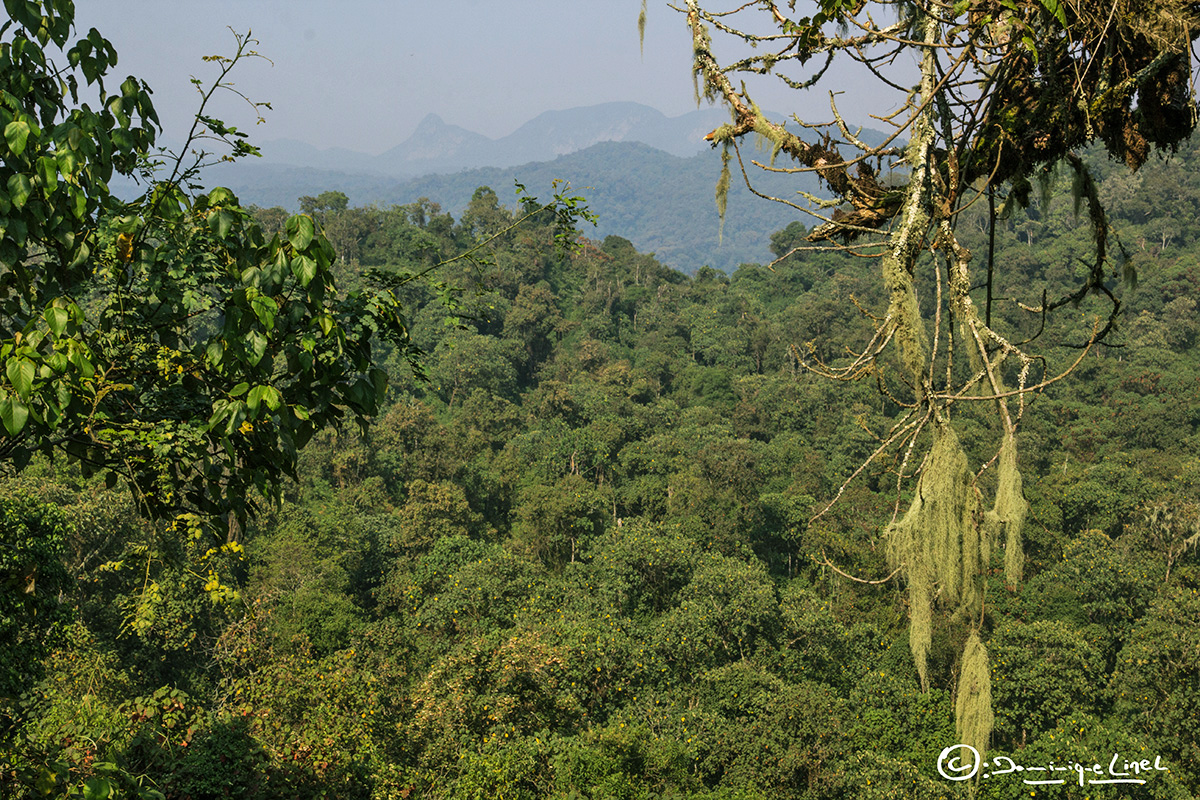- A recent study looks at two polarized characterizations of Indigenous people in Kahuzi-Biega National Park in the Democratic Republic of Congo: forest guardians vs. forest destroyers.
- The two narratives are rooted in colonial perspectives on the Batwa people who had lived inside the park until they were evicted in the 20th century; today, some Batwa populations have returned in an effort to try to rebuild their lives.
- Tensions remain between Batwa members who say they have faced broken promises and insufficient support from park management, but the park management team says it prioritizes Indigenous rights and efforts to improve livelihoods; meanwhile, the situation on the ground is changing amid renewed M23 rebel violence.
- Researchers say the overall situation is much more nuanced than the two narratives of forest guardians vs. destroyers allow for.
Long celebrated by some NGOs and Indigenous rights activists as the guardians of the forest, the Batwa of South Kivu had lived inside what is now Kahuzi-Biega National Park (KBNP) in the Democratic Republic of Congo (DRC) until the 20th century, when they were expelled by the Congolese government, at that time MPR (Popular Movement of Revolution), which demanded the creation of the park.
As the park expanded into the mid-1970s, Batwa people were displaced from one location to another without their agreement or consent. According to their accounts and to those of researchers, evicted people suffered from a lack of support for their material needs, discrimination, social marginalization and poverty.
“In October 2018, after multiple promises to provide them with land outside the park were broken … groups of Batwa started to return to the park’s highland sector,” write the authors of a recent study published in World Development. “Around 2,000 members of the Batwa community, including men, women and children, returned to the park over the following months.”
“After we returned to the park, we relocated some of our former villages and began to rebuild our old houses, our churches, and prepare our former fields for cultivation,” Amos Bahiya Bikulo, a Batwa resident of Kalehe in South Kivu and secretary at the Center for Supporting People with Disabilities for Development, told Mongabay.
In a forceful manner, Congolese authorities and park managers deployed military personnel to dislodge them from this land, deeply significant as the birthplace and burial ground of their ancestors. In South Kivu, these circumstances reignited discussions that had begun during the colonial periods, when colonizers expelled Indigenous and local peoples to create parks.
These discussions often polarized into two camps. One side accused the Indigenous peoples of being the destroyers of forests due to uncontrolled hunting, gathering and tree cutting, arguing that they should be removed from these forests for conservation reasons. The opposing camp countered this viewpoint, asserting that these communities are, in fact, protectors of the forests, as their ways of life, traditions and cultures are in harmony with nature conservation. They argued that these peoples should remain in the forests because they understand them better and serve as their guardians.


Looking beyond simplistic narratives
In light of these opposing views, the study authors decided to look beyond simplistic narratives to understand the real dynamics at play within this protected area, a UNESCO World Heritage Site since 1980 that is also listed among heritage sites in danger. (The region’s security situation has changed significantly since the team conducted its research, due to the ongoing M23 conflict, but the questions the researchers raised in their study remain pertinent.)
The central focus of their study, published in February, was to understand how different policy actors — conservation agencies, Indigenous rights organizations, state bodies and others — construct environmental narratives about Indigenous peoples and their relationship with their ancestral lands. Also, to understand what political purposes these narratives serve, how these stories compare with everyday practices among Indigenous communities today and, ultimately, whether such framings clarify or confuse conservation policy in the highlands of South Kivu.
To better grasp this dynamic, the researchers used a rigorous approach. “We adopted a mixed methods design. On the quantitative side, we analyzed existing wildlife surveys of gorillas and elephants alongside satellite-derived data on tree cover loss. Qualitatively, we conducted fieldwork between 2019 and 2024 that included over 200 semi-structured interviews, several focus groups, transect walks, and participant observations with the Batwa and neighboring communities, as well as customary and state authorities, farmers, artisanal miners, traders, non-state armed groups, park guards, and soldiers. An additional fifty interviews were conducted in Bukavu or via video call,” Fergus O’Leary Simpson, a co-author of the article and postdoctoral researcher at the University of Antwerp’s Institute of Development Policy, wrote in an email to Mongabay.
Historical wildlife data collected in this study indicate that fluctuations in gorilla and elephant numbers are more closely related to cycles of armed conflict that have plagued the eastern region of the DRC since the 1990s than to the presence or absence of the Batwa. Meanwhile, satellite imagery confirms significant forest loss in areas of the park reoccupied by Batwa groups, and field data suggest that some community leaders, including among the Batwa, are facilitating charcoal extraction within the park.
The study highlights that various factors contributed to this situation, as individuals who entered the park had their own specific motivations. According to the report, “While some wanted to cut trees for charcoal and timber, others wanted to create new farms where they could grow their crops or rear livestock.”

Batwa frustrations, park responses
Bikulo expressed his frustration over the unfulfilled commitments made at the creation of KBNP: “We Batwa left the park following a compromise that provided for our relocation and other means of subsidizing our families’ needs. But this commitment has not been honored. Faced with precarious living conditions such as lacking food, marginalization and no consideration, in 2018 we decided to return to the park, but the park rangers chased us away again. And to this day, when decisions are made, the park management do not invite us to meetings, which shows a certain contempt,” he said to Mongabay via a WhatsApp voice message.
In addition, members of the Batwa community assert that they receive insufficient support from park managers. “If we resort to cutting down a few trees for charcoal production and hunting animals in the park, it’s because we cannot meet our families’ hunger and thirst,” a source, who asked to remain anonymous for security reasons and who uses forest resources not for trade but for subsistence, said during a phone call with Mongabay.
But the park management team said it invites various representatives from local communities including the Batwa to park management meetings and supports these communities in their daily entrepreneurial activities. Furthermore, the team said it recognizes Indigenous peoples as significant stakeholders in the park’s protection, both as a natural and cultural heritage.
“Some communities among the Indigenous populations are particularly engaged in the protection of the park and lead community awareness initiatives against deforestation, poaching, and mining. Others, however, still resist change,” the KBNP management team stated in an email to Mongabay.
The Wildlife Conservation Society (WCS) has been highly active in the KBNP for more than 20 years. In 2022, to help alleviate the long-standing conflicts between park managers and local communities concerning Indigenous Peoples’ rights, the Congolese government, through the Congolese Institute for the Conservation of Nature (ICCN), entered into a co-management agreement with WCS. These accords were designed to grant Indigenous peoples access to specific park lands for their ancestral rituals, thereby promoting local culture, funding their children’s education and allocating some territories for agriculture.

However, from their perspective, some civil society observers consistently point to the unfulfilled objectives of this agreement. Ladislas Witanene, an advocate at the Environmental Civil Society Office and a member of the Youth Organizations Network in DRC, explained to Mongabay in a written statement, “The partnership between the ICCN and the WCS claims to prioritize the rights of Indigenous Peoples in conservation actions, but the effective implementation of this commitment remains to be seen on the ground.” He added in a voice call, “We think that if Indigenous populations are engaging in detrimental actions within the park, it’s because some of their rights and promises, such as providing livelihoods for families, are not consistently being upheld.”
Nevertheless, the park acknowledges that tensions persist to this day between eco-guards and Indigenous populations. Despite this, as well as the current situation of the M23, the ICCN, WCS and funding bodies report having made notable progress in resolving these tensions. “We facilitate access to promised lands, financing the education of some Indigenous children, and promoting Indigenous cultures through dedicated day celebrations and ancestral rites like the Mouton rite and the Kisi-Mbosa Chamakasa (Fertile Land),” the KBNP management team said, speaking broadly about their work in the park over the years.
The management team added that the park and its partners “strive to empower Indigenous Peoples so that they do not remain dependent on the Park and its resources” by developing vocational training programs and economic opportunities. “By strengthening their capacities, Indigenous Peoples will be able to develop their own projects and improve their quality of life. The goal is to create a sustainable balance between the protection of the Park and the well-being of local communities, including Indigenous Peoples,” the team stated.
The conclusion of the study indicates that some leaders of the Batwa community have facilitated the extraction of charcoal from the KBNP. According to the study authors, this trade is primarily driven by a growing urban demand for natural resources, particularly in Bukavu and Goma, and is supported by corruption networks involving certain officials in broader policy matters. In other words, the role of the Batwa is significant but not decisive in the extraction of resources from the park.


Conditions changing on the ground
However, conditions on the ground have changed rapidly since the data collection for this study. “The renewed M23 conflict in the highland sector appears to be accelerating deforestation, and some Batwa groups have reportedly re‑armed, consolidating their role to gatekeepers to the charcoal commodity chain in some regions,” added.
Still, the central question the researchers set out to address remains vital. In summary, the article argues that the dominant narratives — whether they celebrate Indigenous peoples as nature’s guardians or condemn them as destroyers — are reductive. Both highlight Indigenous agency while overlooking the broader political economy that shapes their actions on the park’s biodiversity. By questioning these claims, the authors propose a more context-specific perspective in which the actions of Indigenous peoples emerge from what they call “a complex dialectical interplay” between structural conditions and their agency. Policies that start from this premise can move beyond simplistic moral binaries and instead focus on the economic and political forces that ultimately lead to the success or failure of conservation efforts.
Simpson further noted that the polarized narratives centering on “pro-Batwa” and “pro-park” positions tend to treat these two perspectives as “monolithic blocks.” But the overall situation is far more nuanced than that.
Banner image: A young eastern lowland gorilla (Gorilla beringei graueri) in Kahuzi-Biega National Park. Image by Mike Davison via Flickr (CC BY-ND 2.0).
Armed conflict, not Batwa people, at heart of Grauer’s gorillas’ past decline in DRC park
Citation:
O’Leary Simpson, F., Titeca, K., Pellegrini, L., Muller, T., & Muliri Dubois, M. (2025). Indigenous forest destroyers or guardians? The Indigenous Batwa and their ancestral forests in kahuzi-biega National Park, DRC. World Development, 186, 106818. doi:10.1016/j.worlddev.2024.106818
